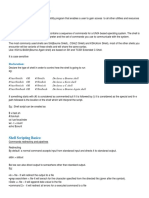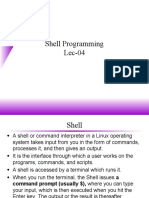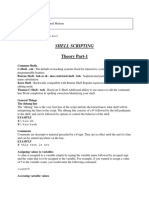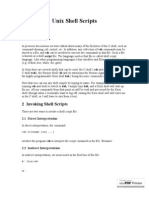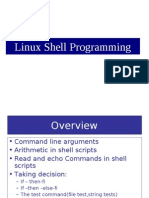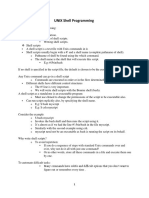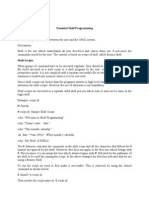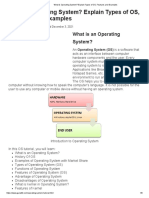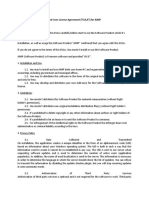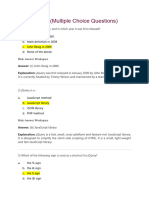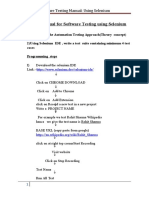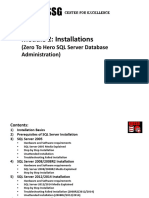0% found this document useful (0 votes)
26 views49 pagesLinux
This document provides an overview of conditional execution in shell scripts, focusing on constructs such as if...else, case...esac, and various loop statements like for, while, and until. It explains the syntax and usage of these control statements, including examples of how to implement them in shell scripts. Additionally, it covers command line arguments and special variables used in shell scripting.
Uploaded by
supravat.p2005Copyright
© © All Rights Reserved
We take content rights seriously. If you suspect this is your content, claim it here.
Available Formats
Download as PDF, TXT or read online on Scribd
0% found this document useful (0 votes)
26 views49 pagesLinux
This document provides an overview of conditional execution in shell scripts, focusing on constructs such as if...else, case...esac, and various loop statements like for, while, and until. It explains the syntax and usage of these control statements, including examples of how to implement them in shell scripts. Additionally, it covers command line arguments and special variables used in shell scripting.
Uploaded by
supravat.p2005Copyright
© © All Rights Reserved
We take content rights seriously. If you suspect this is your content, claim it here.
Available Formats
Download as PDF, TXT or read online on Scribd
/ 49

